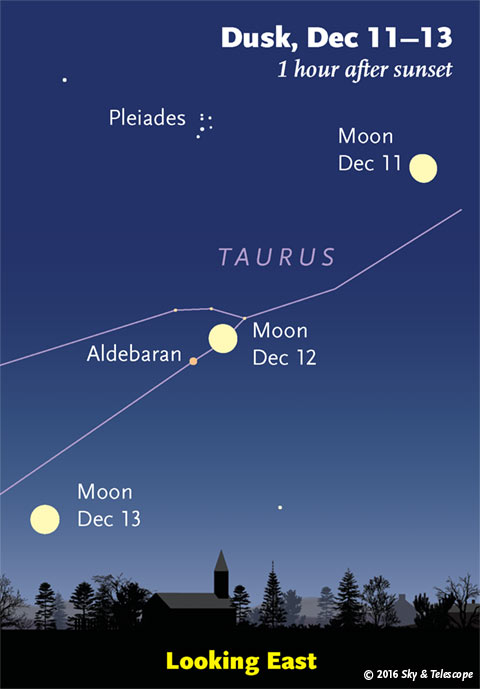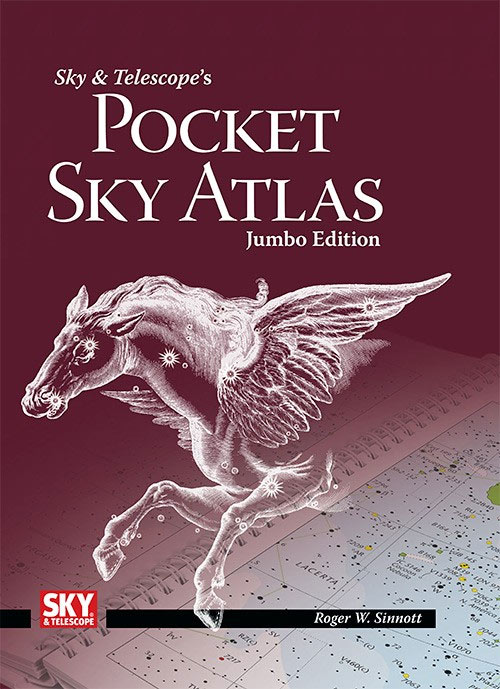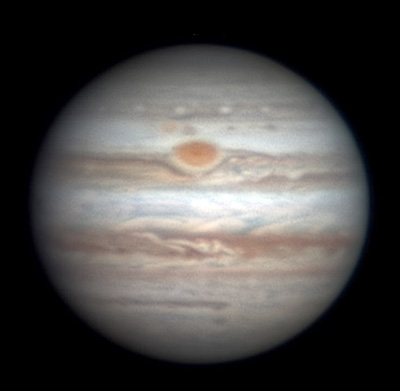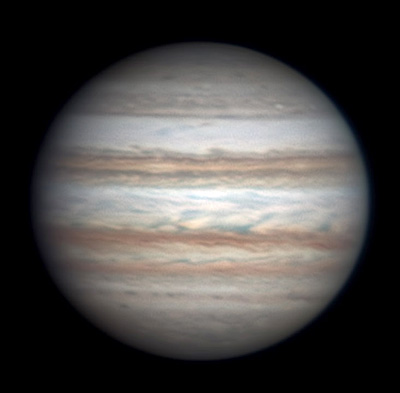Astronomy - This Week’s Sky at a Glance, December 9 – 17

Venus, Mars, and Fomalhaut make a huge "December Dusk Triangle" this year. . .

. . .that shrinks as Venus approaches Mars and the stars slide westward behind the planets.

Meanwhile, the bright Moon in the east traverses Taurus — and Aldebaran! (The Moon here is always positioned as seen from near the middle of North America.)
Friday, December 9
• Vega still glitters brightly in the northwest early these evenings. Deneb is the brightest star above it. Deneb is the head of the big Northern Cross, which now extends to Deneb's lower left. By about 10 p.m. the Northern Cross swings down and around to plant itself upright on the northwest horizon (as seen from mid-northern latitudes).
Saturday, December 10
• Right after dark you'll find the Pleiades high in the east, with Aldebaran and the Hyades below them. Far below these, Orion is beginning to clear the horizon. By about 9 p.m. Orion is much higher and Sirius is rising below it, completing this famous tall stack of December stars.
Sunday, December 11
• Watch for early Geminid meteors! The occasional Geminid should be flashing into view by now even through the moonlight. The shower is due to peak late Tuesday night December 13–14, as told below. On any night, rates increase through the evening and will be greatest from midnight to 4 a.m.: when the radiant in Gemini is high overhead.
Monday, December 12
• The Moon, just a day before full, occults Aldebaran tonight for nearly everyone in North America — around the middle of the night in the East, and earlier in the evening for the West. In westernmost Europe, the occultation happens before dawn on the 13th. The bright orange star vanishes on the Moon's narrow dark limb just beyond the brilliantly sunlit landscape, so use a telescope and look up the exact time for your location.
Tuesday, December 13
• Full supermoon (exactly full at 7:05 p.m. EST). The Moon, slightly larger and brighter than the average full Moon, shines between Orion, Taurus, and Gemini. Look for orange Aldebaran to its upper right and orange Betelgeuse to its lower right. As evening grows late, the triangle they make climbs higher, twists around, and slightly changes shape.
• The Geminid meteor shower should be at its strongest late tonight — but that extra-bright full Moon is in the same part of the sky as the shower's radiant! There will be no moonless period from dusk to dawn. Still, Geminid fireballs are not uncommon. You may see a dozen or more meteors per hour by 10 or 11 p.m. even through the moonlight, as the radiant climbs high in the east. Watch in a direction that keeps the glary Moon itself out of your vision.
The Geminid radiant passes overhead (for skywatchers at mid-northern latitudes) around 2 a.m. See Bob King's Supermoon and Geminids Duke It Out.
Wednesday, December 14
• Now the evening Moon shines between Betelgeuse to its right and Castor and Pollux to its left. As the evening grows late, look for Procyon coming up way down below.
Thursday, December 15
• The Moon rises after dark now. Look for Castor and Pollux to its upper left and, once the Moon is well up, Procyon rising to its lower right.
Friday, December 16
• Have you ever tried to see a Siriusrise? If you can find a spot with a good view down to the east-southeast horizon, watch for Sirius to come up about two fists at arm's length below Orion's Belt. It rises now sometime around 8 p.m. depending on your location. When a star is very low, it tends to twinkle quite slowly and often in vivid colors. Sirius is bright enough to show these effects well.
Saturday, December 17
• The little Pleiades cluster shines high in the southeast after dinnertime, no bigger than your fingertip at arm's length. How many Pleiads can you count with your unaided eye? Take your time and keep looking. Most people can count 6. With sharp eyesight, a good dark sky, and a steady gaze, you may be able to make out 8 or 9.
• The waning gibbous Moon is nicely up in the east after about 10 p.m. The Moon at this phase looks weird to many of us, because we're usually not out late enough to see it in a dark sky.
Look about 7° lower left of the Moon tonight for Regulus in Leo, a very early harbinger of the coming spring.
_________________________
Want to become a better astronomer? Learn your way around the constellations! They're the key to locating everything fainter and deeper to hunt with binoculars or a telescope.
This is an outdoor nature hobby. For an easy-to-use constellation guide covering the whole evening sky, use the big monthly map in the center of each issue of Sky & Telescope, the essential guide to astronomy.

The Pocket Sky Atlas plots 30,796 stars to magnitude 7.6 — which may sound like a lot, but it's less than one per square degree on the sky. Also plotted are many hundreds of telescopic galaxies, star clusters, and nebulae. Shown above is the new Jumbo Edition for easier reading in the night. Click image for larger view.
Once you get a telescope,to put it to good use you'll need a detailed, large-scale sky atlas (set of charts). The basic standard is the Pocket Sky Atlas (in either the original or new Jumbo Edition), which shows stars to magnitude 7.6.
Next up is the larger and deeper Sky Atlas 2000.0, plotting stars to magnitude 8.5, nearly three times as many. The next up, once you know your way around, is the even larger Uranometria 2000.0 (stars to magnitude 9.75). And read how to use sky charts with a telescope.
You'll also want a good deep-sky guidebook, such as Sue French's Deep-Sky Wonders collection (which includes its own charts), Sky Atlas 2000.0 Companion by Strong and Sinnott, or the bigger Night Sky Observer's Guide by Kepple and Sanner.
Can a computerized telescope replace charts? Not for beginners, I don't think, and not on mounts and tripods that are less than top-quality mechanically (meaning heavy and expensive). And as Terence Dickinson and Alan Dyer say in their Backyard Astronomer's Guide, "A full appreciation of the universe cannot come without developing the skills to find things in the sky and understanding how the sky works. This knowledge comes only by spending time under the stars with star maps in hand."
This Week's Planet Roundup

Jupiter's Great Red Spot side. . .

. . .and non-Red-Spot side, imaged by Christopher Go on November 30th and 27th, respectively. South is up. As Jupiter comes back into good telescopic view in the morning sky, it's showing a huge white zone south of the brownish South Equatorial Belt, but nothing like that in the northern hemisphere. A very small telescope should be able to show the difference. Notice little orange Oval BA just to the Red Spot's upper left (south preceding) side.
Mercury is having a nice apparition low in twilight, even as it fades this week from magnitude –0.5 to 0.0. Look for it low in the southwest, about 25° to the lower right of bright Venus as shown at the top of this page.
Venus (magnitude –4.2, in Capricornus) is the bright white "Evening Star" blazing in the southwest during and after twilight.
Mars (magnitude +0.7, in Capricornus) still glows in the south-southwest at dusk, about 20° upper left of Venus. In a telescope it's a tiny orange blob only 6 arcseconds in diameter.
Jupiter (magnitude –1.8, in Virgo) rises around 2 a.m. and shines brightly in high the southeast by early dawn. Look for Spica 6° lower left of it at that time, and Arcturus 30° its upper left.
Saturn is out of sight in conjunction with the Sun.
Uranus (magnitude 5.7, in Pisces) and Neptune(magnitude 7.9, in Aquarius) are high on the southern side of the sky just after dark. Info and finder charts.
__________________________
All descriptions that relate to your horizon — including the words up, down, right, and left — are written for the world's mid-northern latitudes. Descriptions that also depend on longitude (mainly Moon positions) are for North America.
Eastern Standard Time (EST) is Universal Time (UT, UTC, or GMT) minus 5 hours.
__________________________
"This adventure is made possible by generations of searchers strictly adhering to a simple set of rules. Test ideas by experiments and observations. Build on those ideas that pass the test. Reject the ones that fail. Follow the evidence wherever it leads, and question everything. Accept these terms, and the cosmos is yours."
— Neil deGrasse Tyson
— Neil deGrasse Tyson
No comments:
Post a Comment